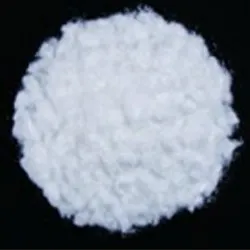
sodium metabisulfite products
Sodium Metabisulfite A Versatile Chemical with Diverse Applications
Sodium metabisulfite, a white or yellowish crystalline powder, is a chemical compound with the formula Na2S2O5. It is widely used across various industries due to its strong reducing properties and its role as a preservative, antioxidant, and bleaching agent. As a member of the sulfite family, sodium metabisulfite has gained significant popularity, particularly in food, beverage, and pharmaceutical applications.
Applications in the Food and Beverage Industry
One of the most well-known uses of sodium metabisulfite is as a food preservative. It acts to inhibit the growth of bacteria, yeasts, and molds, thereby extending the shelf life of various products. Commonly found in dried fruits, wines, and sauces, sodium metabisulfite helps maintain the color and flavor integrity of these foods. It acts by preventing oxidation, which can lead to undesirable changes in taste and appearance.
In winemaking, sodium metabisulfite is particularly crucial. It is typically added during the fermentation process to prevent spoilage and oxidation. By controlling microbial activity, vintners can produce high-quality wines that reflect the desired characteristics of the grapes used. Moreover, it plays a role in ensuring the clarity and stability of the final product, making it a staple in the industry.
Pharmaceutical and Cosmetic Uses
In addition to its food applications, sodium metabisulfite is also used in the pharmaceutical industry. It serves as an antioxidant in various formulations, helping to protect active ingredients from degradation. This is especially important in medications where stability is crucial for efficacy. Its role extends to injections, where it can prevent oxidation that might compromise the integrity of the drug.
sodium metabisulfite products

The cosmetic industry has also recognized the utility of sodium metabisulfite. It is often included in formulations as a preservative, helping to extend the shelf life of skincare and haircare products. Its antioxidant properties ensure that products remain effective and safe for consumers, preventing premature spoilage due to exposure to air and moisture.
Environmental and Health Considerations
While sodium metabisulfite is beneficial in many applications, it is essential to handle it with care. It can release sulfur dioxide gas when exposed to moisture or heat, which may pose respiratory risks, particularly for individuals with asthma or other breathing conditions. Consequently, proper ventilation and the use of personal protective equipment are recommended when handling this chemical.
Moreover, some people may experience allergic reactions to sulfites, which can manifest as headaches or respiratory issues. As a result, the use of sodium metabisulfite is regulated in food products, requiring clear labeling to inform consumers.
The Future of Sodium Metabisulfite
As industries continue to evolve and seek sustainable alternatives, the future of sodium metabisulfite looks promising. Researchers are exploring its potential in various applications beyond the traditional uses, including its role in environmental remediation and as a reducing agent in chemical processes. Its effectiveness and versatility make it a subject of ongoing study, especially in the context of green chemistry.
In summary, sodium metabisulfite is a multifaceted chemical compound with extensive applications, particularly in the food, pharmaceutical, and cosmetic industries. Its role as a preservative and antioxidant has made it invaluable for maintaining product quality and safety. While considerations regarding health and environmental impact are important, the ongoing research and innovative applications of sodium metabisulfite suggest a bright future for this versatile compound. As awareness and technology advance, sodium metabisulfite may find even broader uses, solidifying its position in the marketplace.
-
What Is a Food Additive? Global Insights, Applications & Future TrendsNewsNov.24,2025
-
968 Sweetener: The Modern Solution for Health-Conscious SweeteningNewsNov.23,2025
-
Discover the Benefits and Uses of 965 Sweetener (Erythritol) | Tenger ChemicalNewsNov.23,2025
-
961 Sweetener - A Next-Gen Sugar Alternative for Health and IndustryNewsNov.23,2025
-
Understanding 960 Sweetener: The Modern Sugar Alternative for Health and IndustryNewsNov.22,2025
-
Everything You Need to Know About 955 950 Sweeteners – Benefits, Uses, and TrendsNewsNov.22,2025
-
953 Sweetener: Global Insights, Applications, and Future TrendsNewsNov.21,2025
Hebei Tenger Chemical Technology Co., Ltd. focuses on the chemical industry and is committed to the export service of chemical raw materials.
-

view more DiethanolisopropanolamineIn the ever-growing field of chemical solutions, diethanolisopropanolamine (DEIPA) stands out as a versatile and important compound. Due to its unique chemical structure and properties, DEIPA is of interest to various industries including construction, personal care, and agriculture. -

view more TriisopropanolamineTriisopropanolamine (TIPA) alkanol amine substance, is a kind of alcohol amine compound with amino and alcohol hydroxyl, and because of its molecules contains both amino and hydroxyl. -

view more Tetramethyl Thiuram DisulfideTetramethyl thiuram disulfide, also known as TMTD, is a white to light-yellow powder with a distinct sulfur-like odor. It is soluble in organic solvents such as benzene, acetone, and ethyl acetate, making it highly versatile for use in different formulations. TMTD is known for its excellent vulcanization acceleration properties, which makes it a key ingredient in the production of rubber products. Additionally, it acts as an effective fungicide and bactericide, making it valuable in agricultural applications. Its high purity and stability ensure consistent performance, making it a preferred choice for manufacturers across various industries.





